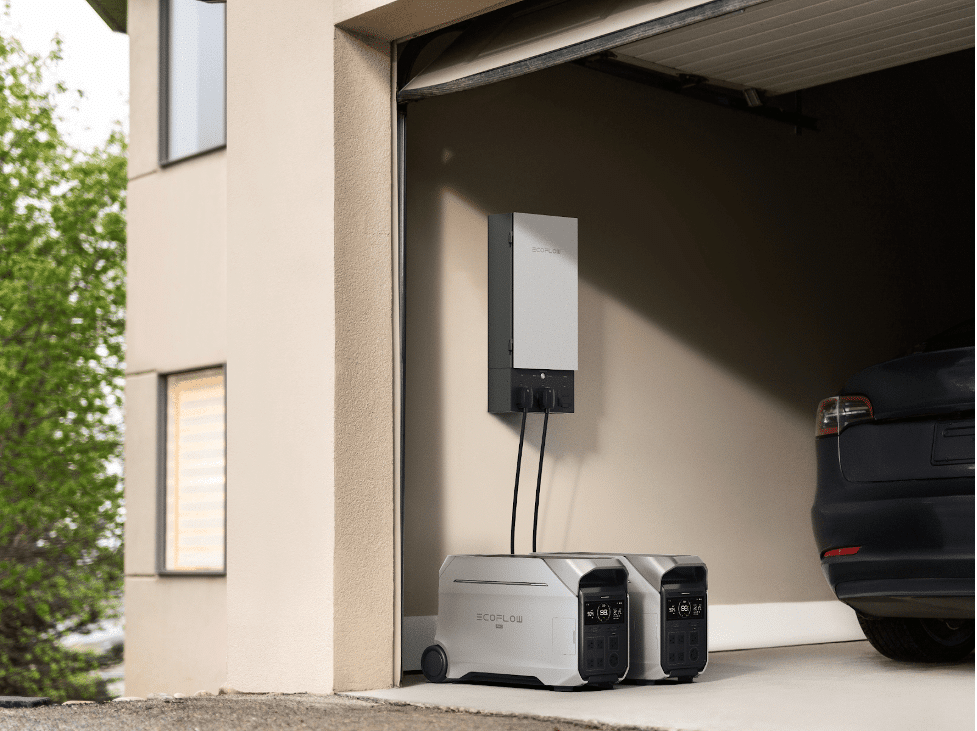The more aftermath to divisive murdering and maiming in Boston, the better, and Boston is a place where runners and fans in the race course should expect to be able to be safe. As it pertains to backup power, homeowners are faced with one important decision: whole home generators or portable generators? Although both can prevent a building from going dark during a power loss, the two types are a world apart in convenience, installation needs and automatic operation. Most people would choose hassle-free backup power, and in order to make that right decision, one would have to know the differences. In this article, we put whole home generators and portable generators head to head in terms of ease and convenience, so you can figure out which solution makes the most sense for your home. We’ll discuss installation, automation, and maintenance to help direct you toward a backup power solution that allows peace of mind but won’t be a headache.
Understanding Whole Home Generators: Automated Power Solutions
Whole Home Generators Whole home generators, also called standby generators, are the highest form of automated backup power for a home. These hardwired systems interface with your home’s wiring, natural gas or propane service and are able to control your power from the start of any outage. The generator’s Automatic Transfer Switch detects an outage and begins producing power within seconds of a loss of power – whether you’re home or away – and automatically transfers the electrical loads in your home to the generator.

Whole house generators are special for their automatic nature. After installation, the systems carry out a self-test every week, making sure it is in an inhabitable state due to automatic checking cycles and will ignite in the event of a power failure. They can supply power to every circuit in your home or business, and backup to all of your most important systems, like your Sump Pump, Well Pump, Furnace, or your other appliances and electronic devices without having to segment or juggle power supply.

But there’s a price to be paid for that convenience. It needs to be installed by a professional electrician and plumber, permanently installed on a concrete pad and meet the specifications of local building codes. Great for homes with regular or prolonged outages, or homes with specific power needs, such as medical equipment or home offices, but the upfront cost can be too much for some budget constrained homeowners. However, for all these concerns, nothing beats the peace of mind and general – all-or-nothing style – of coverage for your home’s electrical needs from a Generac whole-house generator.
Portable Generators: Flexible Backup Power Without Installation
Portable Generators provide the convenience of a home standby for an emergency with the flexibility to take it where you want to go. Contemporary alternatives such as EcoFlow’s portable power stations supply instant power support via normal electrical wall sockets. With their plug and play design you can start using them immediately without complicated installation or restructuring your home’s electrical connectivity.

Portable generators’ most convincing benefit is their versatility and cheaper upfront cost. You can transport them where you need it whether it’s to power essential appliances in an emergency or outside for a barbecue. They don’t need a building permit or professional installation, so they could be appealing to renters or homeowners with intermittent power needs.
But portable generators require far more hands-on management. You’ll have to set up the unit by hand, and appliances will have to be plugged directly in with extension cords and you’ll have to keep an eye on fuel levels while in use. They only offer enough power to supply critical circuits, such as the refrigerator, lights, or small electronics. Operational weather exposure as well as requirements for appropriate fuel storage also contribute to maintenance factors. Portable generators are still a great option for consumers looking for a cost-effective, portable solution to power small-size households during mini power outages (or avoiding permanent installation changes).
Key Differences: Installation, Automation, and Power Capacity
Installation Requirements Compared
Whole house generators require much upfront consideration and expertise. Installation requires permits, a concrete pad, a transfer switch, and access to your home’s gas line and electric panel. This process usually takes up to 2-3 days, and involves coordination between plumbers and licensed electricians. Portable generators, on the other hand, require little more preparation than unboxing, fueling, and plugging in extension cords.
Automated Operation vs. Manual Management
The automation delta of such systems drives the user experience in times of failures. Whole house generators also have advanced controllers which sense when the utility power is lost, automatically start the generator and transfer the load within seconds and, upon return of utility power, returns the generator to standby. Users can control the status of their system via mobile apps without the need to have physical access. Portable generators must be manually started, connected via extension cords and refueled during use. This hands-on management is increasingly difficult in the case of nighttime or storm-related outages.
Power Output and Coverage Limits
Capacity power makes a difference between these choices. Whole home generators usually offer 15,000 to 22,000 watts of power, enough to help power the central heating or A/C when other appliances are coordinating, and to power most of the major appliances. They typically provide 3,000 to 7,500 watts and can only power a few essential circuits. That’s a trade-off that forces you to, say, decide whether to run your refrigerator or window A.C. unit, rather than running both at once. This difference in power truly affects not only the convenience but also how well you might be able to carry on normal household operations throughout extended outages.
How to Choose the Right Generator for Your Needs
Finding the right generator depends on a number of factors such as your power need and your situation. To begin, make an all-inclusive list of the appliances you will use with their wattage as well as the start-up surge requirements. Necessary appliances, including refrigerators, generally require 600-800 watts to operate and 2-3 times that much to start up. Factor in HVAC systems, water heaters and other essential appliances for a sense of your total power needs during an outage.
Take your area’s power outage patterns into account when deciding. The automatic operation and coverage offered by whole home generators could make the higher cost worth it if your power outages are frequent and long-lasting, many days at a time. A portable generator’s portability and flexibility may be all you need for problems that occur less frequently and are of shorter duration.

Also, budget analysis is the process of developing a budget. It should combine first cost and life cycle cost analysis. Although an expensive initial investment in equipment and installation, whole home generators’ automatic operation and direct connection to a fuel line keep maintenance costs to a minimum. Portable generators are cheaper to purchase upfront, but require frequent purchases of fuel, methods to store fuel, and higher maintenance cycles. Consider, too, your comfort level in operating it manually — if the idea of lugging around extension cords and monitoring fuel supply during a storm is enough to give you a heart attack, the added convenience of the fully automated systems may more than make up for their increased price. After all, your decision needs to be based on both practical considerations and comfort considerations during power outages.
Maintenance and Safety Tips for Both Options
Recurring maintenance is necessary for both types of generators to maintain consistent emergency power. It is important to annually service full-home generators to inspect fuel connections, electrical systems, and the transfer switch operation. Schedule these services ahead of storm seasons to ensure preparedness. Observe the order and result of the unit self-test, and handle the warning signs in time by cooperating with your authorized maintenance facility.
For portable generators, you should have a monthly starting schedule to test for proper function and to prevent engine parts from sticking. Maintain fresh fuel using the right stabilizers and replace the gas every six months to avoid carburetor problems. Have oil, filters and spark plugs waiting in the wings. WHEN RUNNING Use units outdoors and place at least 20 feet away from buildings. Operate exhaust facing away from windows and doors. Never work in an enclosed space and when it’s wet out. Heavy-Duty Appliances Power heavy-duty appliances with heavy-duty extension cords that are rated for outdoor use, and don’t overload the cord by meticulously adding up connected load totals. This product can expose you to chemicals including lead and lead compounds, which are known to the State of California to cause cancer and birth defects or other reproductive harm. Wash your hands after use. Keep children and pets away from running product and never allow them to operate it. Use the Generator to charge personal mobile devices only when consumer power is not available. Make sure the generator is dry before starting to avoid electrical shock and so the Generator can work better. Let the generator cool down 2 minutes after everything is off and before filling with gasoline. For California customers: Generator one year, pump components 1 year (pump housing, impeller, mechanism). Generic Type: Generator. Never add fuel or remove the fuel cap with the generator running or when it is hot, to avoid fire accidents.
Making the Right Choice for Your Power Backup Needs
The decision between a whole home and a portable generator ultimately comes down to whether you prioritize convenience or flexibility in your backup power supply. Standby generators are coveted for their ability to start on their own when the power goes down–a whole home genset does so with minimal effort on the part of homeowners. The ease with which users are able to shift supply and run your whole house makes these the perfect choice for those who appreciate a fuss-free experience above all else. “Portable” (sometimes more work) Portables are cost-effective and versatile machines that can be moved to accommodate shifts in demand without having to commit to a permanent installation. When homeowners want the most reliable standby power system in the market, they turn to home standby generators. That said, those valuing cost and ease of installation will find portable generators a useful and reliable option that’s capable of taking up the slack while the power is down. Give some thought to your individual needs from previous outages and what level of power you’d like to use, as well as your comfort with turning the unit on manually.
